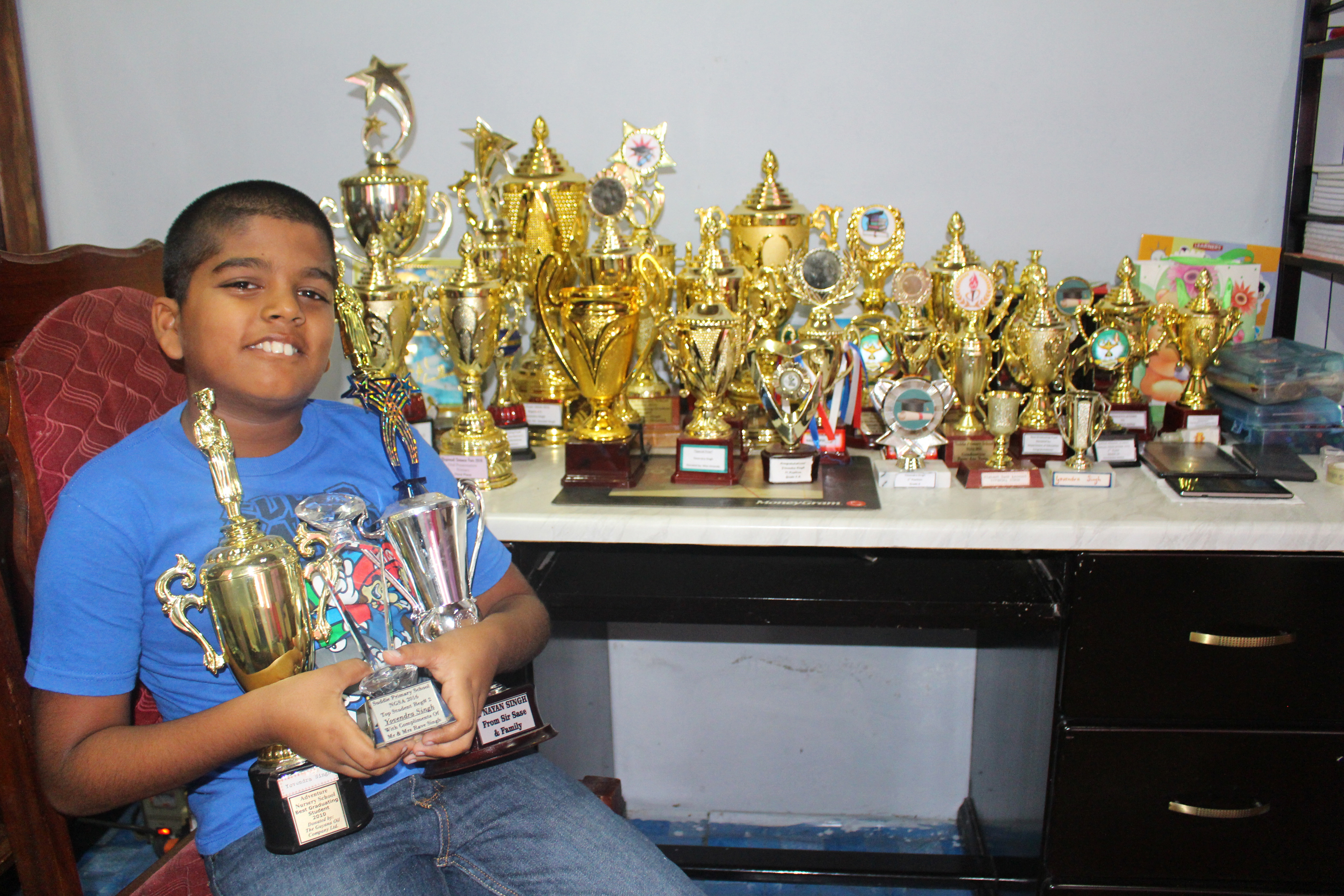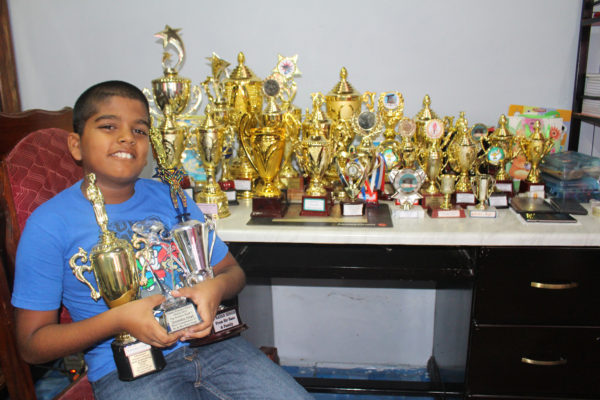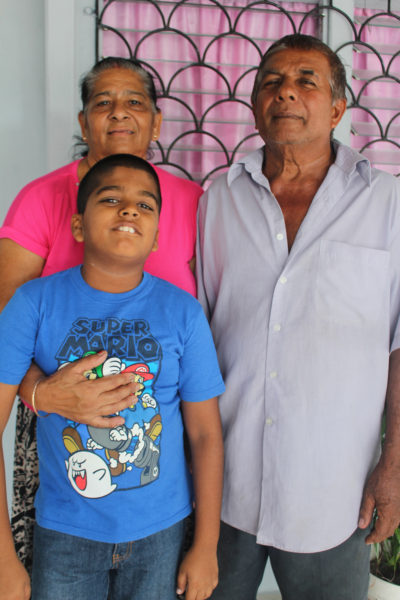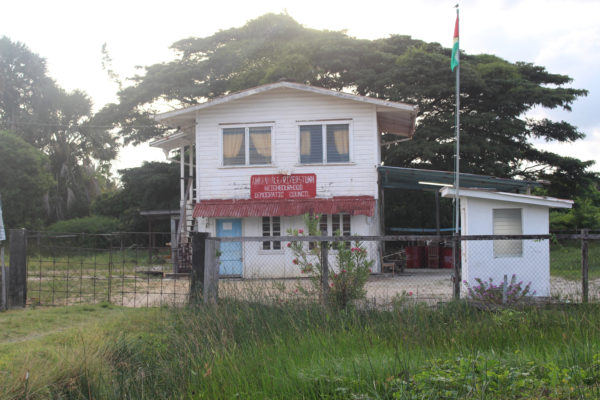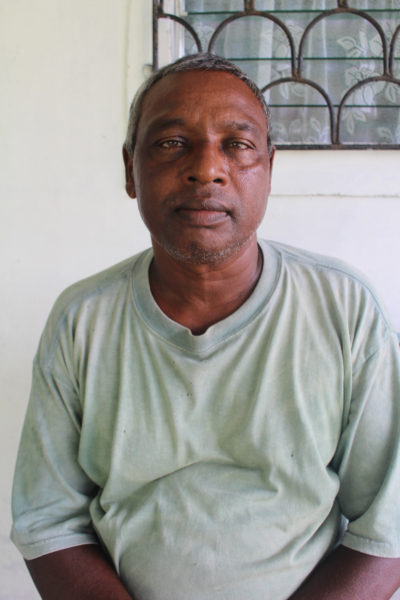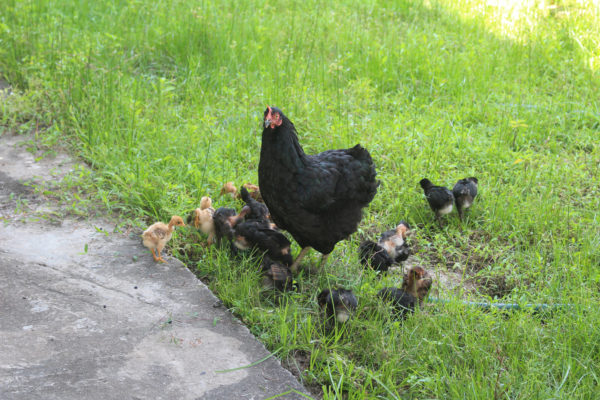Story and photos by Joanna Dhanraj
Onderneeming, Essequibo Coast is a relatively large village when it comes to square miles, but many of its residents, particularly those who lived along the Public Road, have migrated. However, the village doesn’t end there. It has three inner sections: Sandpit Phase One and Two and The Little Red Village. Today in total, Onderneeming has approximately 1,500 residents.
The Suddie Primary School is actually in Onderneeming and The Little Red Village has a nursery school, the village also has a Guyana Water Incorporated Pump Station, a few shops and churches and the Rooster Resort. It is perhaps most famous for being home to the New Opportunity Corps, an institution that houses children who have been at odds with the law.
Mohan Sookdeo has been a resident of Onderneeming for 26 years now. He lives with his wife and a son. At the time of our visit, he was enjoying what he referred to as the nice “bottom-house breeze” in his hammock.
“Onderneeming is a very peaceful place and quiet; no complaints,” a contented Sookdeo said.
In a village where most people depend on rice for a living, Sookdeo is a welder. He plants a kitchen garden when he can with mostly bora, karilla and ochro. He has a few fruit trees also mango, golden apple, sugar apple and papaya. He manages some hurries, patwa, hassa and sunfish whenever he feels up to some sweet-water fish.
Sookdeo’s son, Jerome is a joiner and works along with a relative who makes and sells furniture. This workshop is in Anna Regina, some 13 miles away. According to Sookdeo, his son pays $100 from his village to Suddie, which is nearby, where a number of hire cars are usually parked, willing to take anyone beyond Suddie, toward Charity. From there, he pays another $200 to his destination. If he’s lucky he may find a car that takes him all the way; and if he’s luckier he’ll just get a ride from the same relative he works with.
“One of the good things about living here: you can go the canal behind the rice fields, about 200 rods from here or the seashore, just a stone’s throw away to catch fish. I like it here. You don’t have no problem with nobody; no noise, no disturbance. It’s a peaceful place,” Sookdeo said.
His wish? “I would like if Essequibo can have a recycling plant. Majority of the product comes in plastic. It would benefit not just Essequibo but the country too. It will also help to provide jobs for the youngsters.”
Pretty Reg Singh commonly known as ‘PT’ is a retired rice farmer, who also worked with Mahazarally at Supenaam as an electrician. At 65, he’s now a pensioner but also works as a part-time electrician and tends to his kitchen garden every day. He lives with his wife Dhanpattie and grandson Yovendra Singh or Nyan as they fondly call him. Nyan recently topped the Essequibo Coast at the National Grade Six Assessment.
Though he was born a few villages up at a place called Fairfield, PT remembers nothing of it except for his father telling him that they were troubled by “spirits” as the place was bushy. His father also said that whenever he caught fish, took it home and had it cooked, the family could not digest it without becoming sick. He therefore subscribed to the belief the land they lived on was “possessed by the spirits of Dutchmen.” So they moved to Onderneeming.
PT spoke of the hard life he faced growing up. “After we grow up we father use to allow we to bust coconut, then we dig out the inside, put it to dry then ship it to Georgetown where they use to make oil out of it,” he said.
They had no electricity. “The ferry use to come every day with blocks of ice, but once a week, on Saturdays we used to go and buy a five pound. We use to shave it to make shave ice and put syrup on it. Nobody had fridge then so like when they had weddings, people use to store the ice in a bag full of [wood] shavings to keep it cool. I remember when me and me brother was little. We were too little to know ice use to melt and we thief some of the people ice from the bag of shavings and hide it. When we gone back for the ice, it gone. We didn’t realize, is melt the ice melt,” PT said, laughing.
It was on those sno-cone Saturdays that PT remembers his sisters baking buns and salara. Those were the little rewards they got from the tiresome work in the backdam.
The backdam life was more than we know it to be now, he said; not the life of combines and ploughs. They used bulls and many times they were forced to leave the bulls and do the ploughing themselves with a hoe as the rice fields were too soft and the bulls had to often be pulled out after getting stuck.
“It got two [rice] crops a year and we’d work for three months straight. But when crop done, work still ain’t done. We had to start planting the two acres behind our house. We use to tie the bull to a post and they use to go round and round mashing the straw to thresh the paddy from it but you always got to stay with it. As the bull go round the post you got to go round behind it because if you didn’t, it will eat the straw. The straw used to bind [its] inside. Sometimes you put a mesh in its mouth or put something like a basket over its mouth but still your work didn’t finish there. When they mash it up you following with a fork or something to keep turning it up.”
However, though much work was required then, it paid better. According to PT, their five acres produced 200 plus bags of paddy. Today it has been reduced to about quarter of that, producing some 60 bags. This is so, he said, because the land is less fertile. Not only is his yield significantly less, but he also has to buy fertilizer; something they never had to buy then as the land was rich.
The family of 14, mother, father and 12 children, was very poor. Every week, throughout the crop they took groceries on credit from a shop in the village and paid their debt when the crop was over. According to the man, sometimes when they finished paying, nothing was left.
He continued, “Long ago when crop done we use to sell to GRB [Guyana Rice Board] and they had a truck use to come through the village once a month with rice. When you want rice you put out a yellow flag on the road and they gave you a bag and discount it from the set you gave them.”
The flag system also worked in the health sector. “It was the same thing for a doctor. Once a week the doctor use to pass through and if you got somebody sick, you make sure you put out a white flag. The same flag use to work for the dentist,” he said.
As a child, he looked forward to the annual trip to Georgetown. His father would take all 12 of them to the city and buy them clothes. These clothes had to last them until the next year.
Coming from a large family meant a whole lot of food, but it also meant a great deal of cooking. He recalled the corners of his mouth turning up at the sight of the rotis packed in a basin though the cooks wouldn’t have seen it as funny. His sisters, he said, had to make 14 rotis plus one more as his father ate two.
According to PT, in time, the red road was pitched, they evolved from canals and rain water to potable water and their flambeaux were replaced by electricity.
The World Beyond Georgetown could not leave without talking to PT’s grandson, Nyan.
Suddie Primary top student Yovendra ‘Nyan’ Singh topped his school as was expected by his teachers and relatives but nobody was prepared for him topping the entire Essequibo Coast as well.
Nyan placed 32nd countrywide at the National Grade Six Assessment. He managed to attain an outstanding 553 marks at the exam.
Nyan was said to have always been a top student at Suddie Primary having secured 14 first places and always managing to score an average of 90 per cent every term. As an ‘A’ student he was always chosen to represent the school at science fairs and spelling quizzes. His accumulation of trophies over the years, including what he received at the recent exams has grown to 28.
Not much of a talker, Nyan said, “It was lots of revision and hard work. I studied up to nine in the nights, sometimes ten.”
He credited his hard work, teachers, the extra lessons and his uncle, Revindra. His uncle, according to his grandmother, lives in Adventure, one village away. But after work every day he makes a trip to the family house and would sit down with Nyan and his books until nine or ten at night.
Nyan also expressed gratitude to his grandmother, who he said, is responsible for all his meals. She made sure he had a balanced meal every day, inclusive of meat and fish and lots of vegetables, though his favourite foods are curried chicken and rice and chicken burger.
In his free time he enjoys watching Scooby Doo, Teenage Mutant Ninja Turtles and playing cricket. He loves reading.
Nyan hopes that by the time he completes secondary school he would have earned more than double the trophies which he proudly displays on a table in his house. He hopes to someday become a Civil Engineer.
To other children still in school and especially those preparing to write the NGSA next year, he admonishes, “Keep on revising and put your mind to achieving your goals.”
Though he’s secured a spot at Queen’s College, he will be attending Anna Regina Multilateral School come September.
This reporter went as close to the New Opportunity Corps as she could, but was told by the security guards on duty that taking photographs of the buildings was not allowed. From outside though, some of the children could be seen cleaning the farm; singing Reggae music as they worked. From behind them came the sweet music of steel pans. According to some residents, the main building is over 100 years old.
